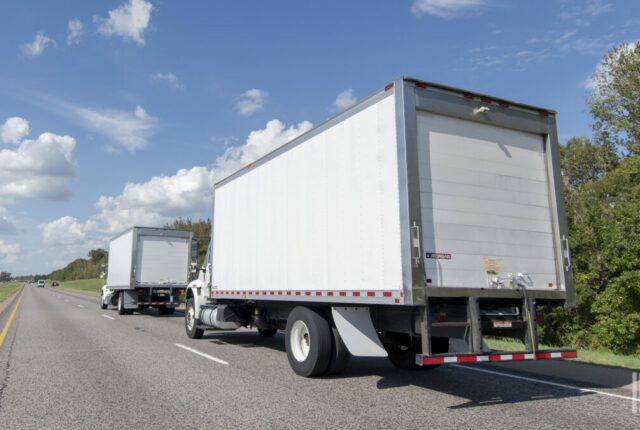
Green Warehousing: Eco-Friendly Practices for Sustainable Logistics
In the fast-paced world of logistics and supply chain management, the concept of “Green Warehousing” is gaining momentum, aligning with the global push towards sustainability and environmental consciousness. This article explores the various aspects of green warehousing, from its definition to the implementation of eco-friendly practices, shedding light on the benefits, challenges, and future trends in sustainable logistics.
Definition of Green Warehousing
Green warehousing involves the adoption of environmentally friendly practices within the warehouse and distribution center operations. It encompasses everything from energy-efficient technologies to sustainable packaging and waste management.
Importance of Sustainable Logistics
With climate change concerns on the rise, companies are recognizing the significance of incorporating eco-friendly practices into their logistics operations. Sustainable logistics not only minimizes the ecological footprint but also aligns with corporate social responsibility, contributing to a positive brand image.
Benefits of Green Warehousing
Environmental Impact
One of the primary benefits of green warehousing is its positive impact on the environment. Reduced energy consumption, lower emissions, and efficient waste management contribute to a greener and healthier planet.
Cost Savings
Contrary to the misconception that sustainability comes at a high cost, green warehousing often results in significant long-term savings. Energy-efficient technologies and streamlined processes lead to reduced operational expenses.
Corporate Social Responsibility
Adopting green warehousing practices showcases a company’s commitment to social responsibility. Consumers increasingly favor eco-friendly businesses, and this shift positively influences brand loyalty.
Key Eco-Friendly Practices
Energy-Efficient Lighting
Replacing traditional lighting with LED fixtures not only saves energy but also provides better visibility within the warehouse. Motion sensors and smart lighting systems further enhance efficiency.
Renewable Energy Sources
Integrating renewable energy sources like solar panels can significantly reduce a warehouse’s reliance on conventional power grids, making operations more sustainable.
Sustainable Packaging
Choosing recyclable and biodegradable packaging materials reduces the environmental impact of shipping and storage. Companies can also explore innovative packaging solutions that minimize waste.
Efficient Waste Management
Implementing robust waste management practices, including recycling programs and waste-to-energy initiatives, ensures that the environmental footprint of the warehouse remains minimal.
Technology Integration
Smart Warehouse Systems
Incorporating smart warehouse systems enhances overall efficiency. Automated processes, data analytics, and real-time monitoring contribute to a streamlined and environmentally conscious operation.
IoT Devices for Monitoring
The Internet of Things (IoT) plays a crucial role in monitoring energy consumption, inventory levels, and equipment performance. This data-driven approach enables proactive decision-making for sustainable practices.
Automated Inventory Management
Automation not only reduces errors in inventory management but also optimizes warehouse space and energy use, aligning with green warehousing principles.
Challenges and Solutions
Initial Investment Concerns
While the initial investment in green technologies may seem daunting, the long-term cost savings and positive environmental impact justify the upfront expenses.
Overcoming Resistance to Change
Resistance to change is a common challenge in adopting green warehousing practices. Effective communication, employee training, and highlighting the benefits can help overcome this resistance.
Technological Integration Challenges
Integrating new technologies may pose challenges, but investing in proper training and partnering with tech-savvy vendors can alleviate these concerns.
Future Trends in Green Warehousing
Emerging Technologies
Technological advancements such as robotics, artificial intelligence, and blockchain are expected to play a pivotal role in shaping the future of green warehousing.
Global Sustainability Initiatives
As global sustainability initiatives gain momentum, green warehousing is likely to become a standard practice rather than an exception.
Impact on Supply Chain
Positive Effects on Logistics
Green warehousing positively influences the entire supply chain, creating a ripple effect that benefits manufacturers, distributors, retailers, and consumers alike.
Consumer Perception and Demand
Consumers are increasingly making purchasing decisions based on a company’s commitment to sustainability. Green warehousing directly influences consumer perception and demand.
Steps to Implement Green Warehousing
Conducting Environmental Audits
Before implementing green practices, conducting environmental audits helps identify areas for improvement and establishes a baseline for measuring progress.
Employee Training and Involvement
Educating and involving employees in the transition to green warehousing is crucial for successful implementation and sustained commitment.
Partnering with Sustainable Suppliers
Collaborating with suppliers who share a commitment to sustainability ensures a seamless integration of green practices throughout the supply chain.
Success Metrics
Measuring Environmental Impact
Key performance indicators (KPIs) such as reduced carbon footprint, energy savings, and waste reduction serve as measurable metrics for the environmental impact of green warehousing.
Evaluating Cost Savings
Financial metrics, including reduced operational costs, energy expenses, and waste disposal costs, provide tangible evidence of the cost savings associated with sustainable logistics.
Realizing a Greener Future
The Role of Companies in Sustainable Logistics
Companies play a pivotal role in driving sustainable practices in logistics. By prioritizing green warehousing, they contribute to a greener future and set industry standards.
Creating a Collective Impact
The collective efforts of businesses adopting green warehousing practices contribute to a more sustainable and environmentally conscious supply chain ecosystem.
Conclusion
In conclusion, green warehousing is not just a trend; it is a necessity for businesses aiming to thrive in an eco-conscious world. The benefits, from cost savings to positive environmental impact, make it a strategic choice for companies looking to enhance their brand reputation and contribute to a sustainable future.
FAQs
- Is green warehousing only for large corporations? Green warehousing practices can be adopted by businesses of all sizes. Many solutions are scalable, allowing even small businesses to implement eco-friendly practices.
- Are there government incentives for adopting green warehousing practices? Many governments offer incentives and grants for businesses adopting sustainable practices. Research local and national programs to take advantage of available support.
- Can green warehousing be applied to all industries? Yes, the principles of green warehousing can be applied to various industries, from manufacturing to retail. Customizing practices based on industry specifics is key for successful implementation.






